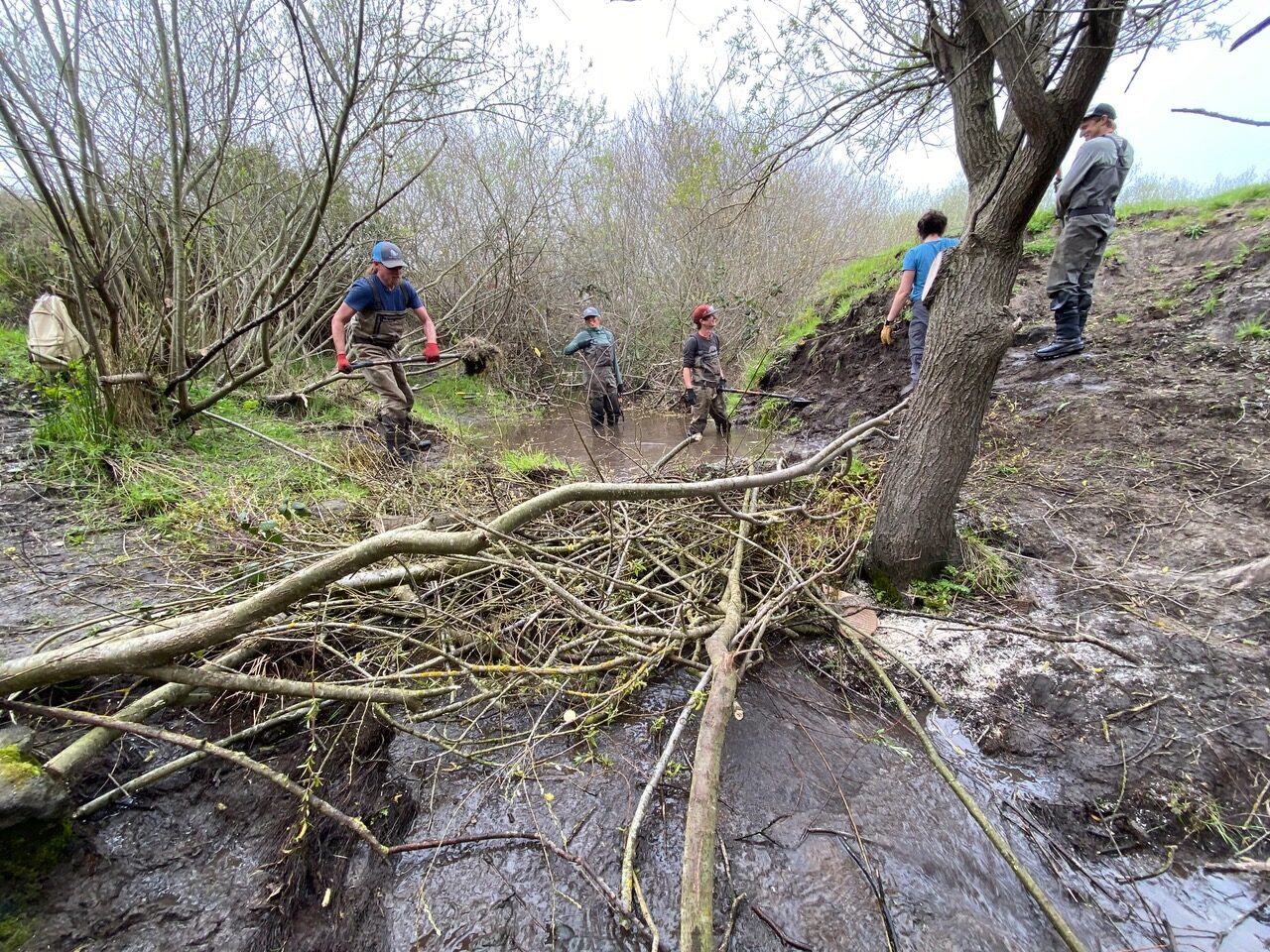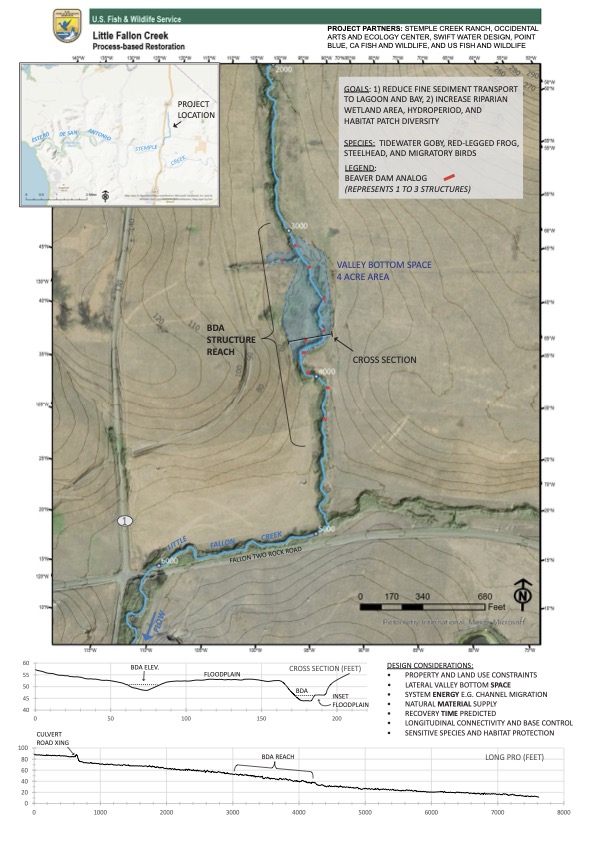
In 2023, The WATER Institute partnered with the US Fish & Wildlife Service and Swift Water Design to install approximately 20 pilot postless beaver dam analogs (BDAs) on a coastal stream in Marin County. The stream, Little Fallon Creek, is a tributary of Stemple Creek, located on Stemple Creek Ranch, a 920-acre working landscape of cattle, sheep, and native grassland species. Stemple Creek Ranch belongs to landowner Loren Poncia, and additional partners include the California Department of Fish and Wildlife and Pt. Blue Conservation Science.
Stemple Creek is a coastal tributary leading to saltwater marsh and coastal wetlands of Estero San Antonio. The area provides an essential habitat for California red-legged frogs, which are federally listed as threatened and designated as the state amphibian. Unfortunately, the Little Fallon Creek channel was deeply incised with a narrow band of riparian vegetation and provided minimal habitat for amphibians and migratory birds. The incised channel provided only shallow water habitat as it drained the wetlands and reduced overall riparian vegetation production and suitable habitat. Furthermore, Stemple Creek and the lower Estero San Antonio lagoon suffer from excessive sediment inputs from historic channel excavation and floodplain disconnection throughout the watershed.


Process-based restoration techniques, including BDAs, are low-cost solutions with significant potential to restore aquatic habitats. In this case, the BDAs are made by hand from on-site live willows that are anchored and woven across the creek channel and reinforced with mud, creating a structure very similar to what a beaver might build. BDAs expand the wetted area, raise the water table, and promote the growth of vegetation along 0.25 miles of stream and riparian wetlands near the spring. This project benefits the California red-legged frog habitat by creating deeper backwater pools, and basking areas.
This project allows us to employ low-tech process-based restoration techniques at a larger spatial scale necessary to trap and store significant sediment before it reaches the Estero de San Antonio lagoon.





